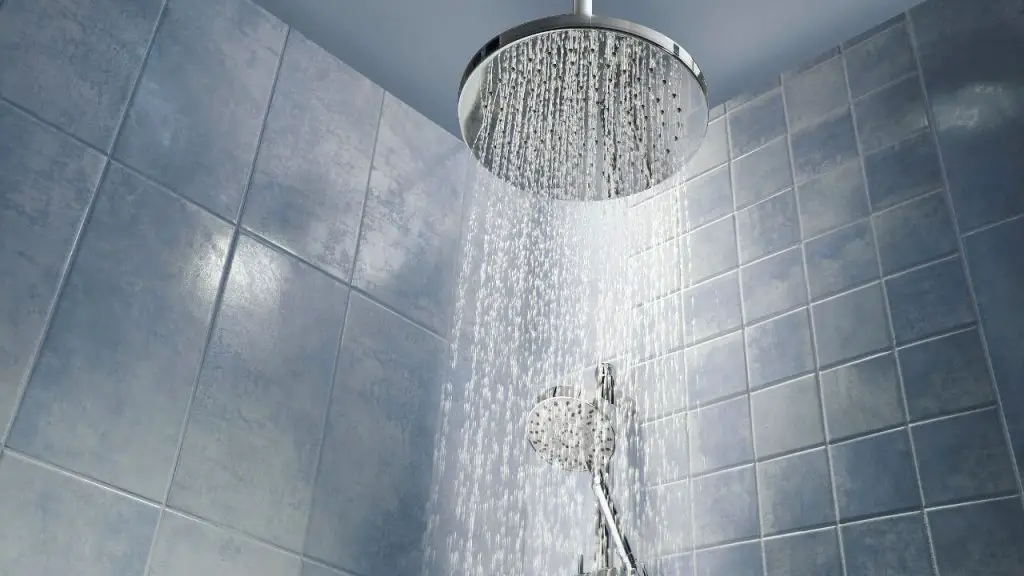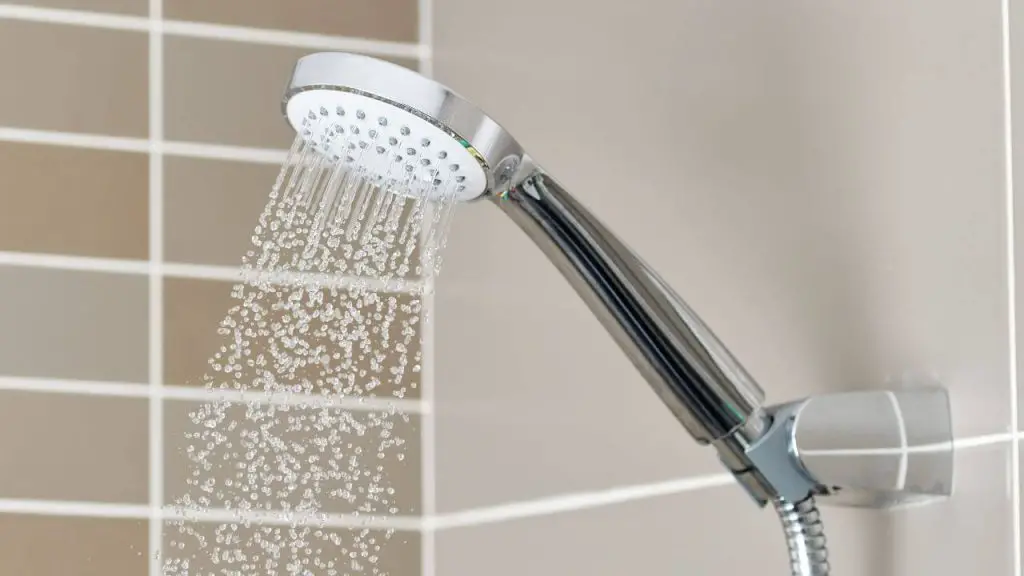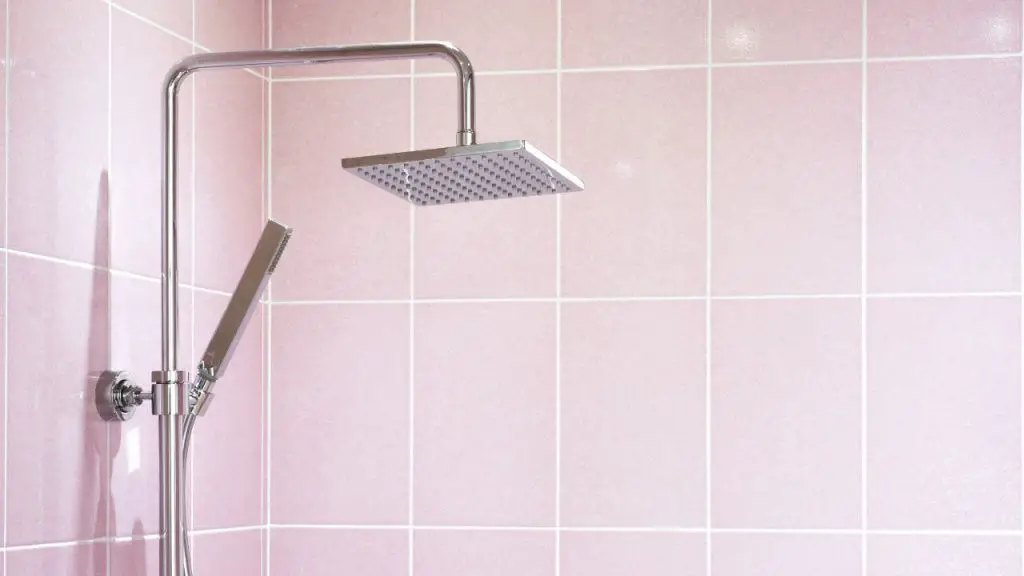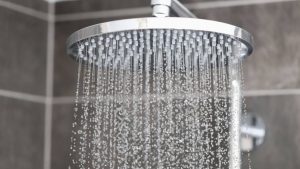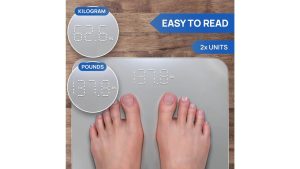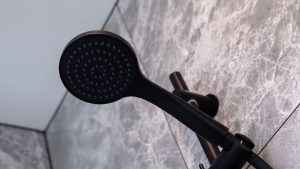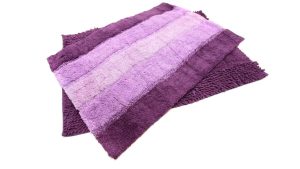A low-flow shower head restricts water flow to conserve water. It typically uses less than 2.5 gallons per minute (GPM). Embracing eco-friendly practices in our daily routines is essential as the world grapples with limited natural resources. A low-flow shower head is a simple yet effective tool to reduce water usage. Its design ensures you enjoy your shower using less water, leading to lower utility bills and a smaller environmental footprint.
Swapping out a standard shower head for a low-flow model is a straightforward change that can significantly impact over time. This eco-conscious choice is gaining popularity among homeowners looking to make their bathrooms more sustainable without sacrificing comfort or performance.
Introduction To Low-Flow Shower Heads
Low-flow shower heads are making waves in the world of bathroom fixtures. They save water and energy, leading to a greener footprint and reduced utility bills. This introduction sheds light on their popularity and the technology beneath their nozzles.
The Rise Of Eco-friendly Bath Fixtures
As the world grows more eco-conscious, eco-friendly bath fixtures become top choices. Low-flow shower heads are central to this trend. Users embrace these fixtures to conserve water and play an environmental protection role. The appeal of these shower heads stretches beyond conservation; they reduce household expenses, too.
Basic Principle Of Low Flow Technology
The core idea of low-flow technology is simple: less water and more efficiency. Traditional showers pour out water. Low-flow models, in contrast, limit the water flow without compromising the showering experience. They come equipped with flow restrictors and water-saving aerators. These components work together to deliver less water per minute while maintaining pressure. As a result, they meet the strict water flow rates mandated by the U.S. Environmental Protection Agency’s WaterSense program.
- Flow restrictors control the volume of water passing through the shower head.
- Aerators mix air with water, creating a complete and comfortable spray.
Whether through advanced designs or simple adjustments, the technology empowers both the planet and the consumer. With smart innovation, low flow doesn’t mean low pressure anymore.

Benefits Of Low-Flow Shower Heads
Low-flow shower heads are a smart move for any home. They save water and money. This section reveals how making the switch can lead to impressive benefits.
Water Conservation Impact
Using less water is vital for our planet. Low-flow shower heads reduce water use significantly. Here’s how they help:
- Lower gallons per minute: Traditional shower heads use 2.5 gallons per minute (GPM), while low-flow versions use less than 2 GPM.
- Meet EPA criteria: They often have a WaterSense label, meaning they meet the Environmental Protection Agency’s standards.
Reducing Utility Bills
Save money every month with a low-flow shower head. Here is the breakdown:
- Less water means less heating. This equals lower energy bills.
- With less water usage, your water bill drops, too.
Long-term Environmental Benefits
The benefits extend far beyond your monthly bills. Low-flow shower heads protect future resources. They offer these long-term advantages:
- Help reduce the overall demand on the water supply.
- Contribute to lower carbon emissions from reduced heating.
- Support the health of aquatic ecosystems by using less water.
Measuring Water Flow Rates
Measuring Water Flow Rates is critical to understanding how shower heads can conserve water. A low-flow shower head is designed to reduce water usage without sacrificing pressure. Let’s investigate how these rates are measured and what difference these fixtures can make.
Understanding Gpm Ratings
GPM stands for Gallons Per Minute. It tells us how much water flows through a showerhead every minute. The lower the GPM, the less water it uses, saving water and energy. Federal standards require shower heads to have a GPM of no more than 2.5. An easy way to check a shower head’s GPM is by looking for the label or the manufacturer’s specifications.
Comparing Standard Vs. Low Flow Models
Standard shower heads usually have GPM ratings above 2.5, while low-flow models boast ratings of 2.0 GPM or less. Achieving this involves advanced technology to maintain intense water pressure. Low flow means a more satisfying shower. Instead, it’s a more innovative way to enjoy daily rituals without wasting resources. When selecting a showerhead, compare these aspects:
- Water Savings: Low-flow models can save thousands of gallons per year.
- Energy Savings: Less hot water means lower energy bills.
- Performance: Look for models with good pressure performance reviews.
By choosing a low-flow shower head, you contribute to water conservation and enjoy lower utility expenses. It’s a simple switch with a significant impact.
Installation And Maintenance
Upgrading to a low-flow shower head is a savvy move for water conservation and savings on utility bills. This eco-friendly swap is simple. Proper installation and maintenance ensure the device performs optimally. Let’s dive into installing and caring for your new low-flow showerhead.
Step-by-step Installation Guide
You don’t need to be a plumbing expert to install a low-flow shower head. Follow these easy steps:
- Turn off the water: Ensure your shower’s water supply is off.
- Remove the old shower head: Unscrew the existing shower head from the arm. Use pliers if necessary, wrapping them with tape to protect the finish.
- Clean the threads: Wipe the shower arm’s threads to remove debris or old plumber’s tape.
- Apply new plumber’s tape: Wrap the threads with the new plumber’s tape to prevent leaks.
- Attach the low-flow shower head: Screw the new shower head onto the arm by hand. Tighten it securely, but avoid over-tightening.
- Test for leaks: Turn the water back on and check for leaks. Tighten further if necessary.
Routine Maintenance Tips
Keep your low-flow shower head in excellent condition with these maintenance tips:
- Clean regularly: Prevent mineral buildup by cleaning the shower head with white vinegar and water.
- Check for clogs: Examine the nozzles for any clogs and use a small brush or pin to clear them.
- Inspect for leaks: Regularly check for leaks from the shower head connection and tighten if required.
- Replace worn parts: Over time, components like washers may wear out. Replace them as needed to maintain a good seal.
Selecting Your Low-Flow Shower Head
Making the switch to a low-flow shower head helps conserve water. This intelligent move can also reduce utility bills. Embarking on the quest for the perfect low-flow showerhead may seem daunting. Fear not! A guide to the key features and top models ensures a delightful shower experience is within reach.
Key Features To Look For
What should top your list when selecting a low-flow showerhead?
- Water Efficiency: Look for models with a flow rate of 2.0 gallons per minute (GPM) or less.
- Spray Quality: High-efficiency shower heads should still offer strong, satisfying spray.
- Adjustability: Options to change spray settings can enhance showering comfort.
- Installation: Choose a model that’s easy to install.
- Design: Pick one that matches your bathroom’s aesthetic.
Top Brands And Models
Several manufacturers deliver performance along with water conservation. Consider leading options:
| Brand | Model | Flow Rate |
|---|---|---|
| High Sierra | Classic Plus | 1.5 GPM |
| Nebia by Moen | Quattro | 1.75 GPM |
| Delta | H2Okinetic | 2.0 GPM |
| Kohler | Awaken B90 | 2.0 GPM |
Personalizing Your Shower Experience
Customize your shower for peak enjoyment:
- Consider Accessories: Add a filter or shower arm for more control.
- Choose Your Finish: Match your décor with the right color and finish.
- Explore Technologies: Some models offer unique features like water temperature control.
Embrace a low-flow shower head for a greener lifestyle and a luxurious shower experience. Save water, enjoy your shower, and feel good about your choice!
Rebates And Incentives
Are you interested in saving water and money? The answer could be with a low-flow shower head. But there’s more! Rebates and incentives could make the switch even sweeter. Let’s explore the benefits available when you upgrade to this eco-friendly option.
Government And Utility Programs
Governments and utilities often offer programs to encourage water conservation. These programs can include discounts or rebates when you install low-flow shower heads in your home. They recognize the importance of saving water and support efforts to reduce waste.
- State governments may have water-saving initiatives.
- Utility companies might offer rebate programs.
- Local agencies could provide incentives for water-efficient products.
How To Qualify For Rebates
To qualify for rebates, follow a few simple steps:
- Check for available rebates in your area.
- Ensure the shower head meets the program criteria.
- Keep your purchase receipt and the product’s WaterSense label.
- Complete the program application process.
Remember, every program has different requirements. Some may need a certified installer, while others allow a DIY approach. Always read the details carefully.
| Step | Action | Tips |
|---|---|---|
| 1 | Find Rebates | Use online tools or contact local utilities. |
| 2 | Select Qualified Product | Look for the WaterSense label. |
| 3 | Install Properly | Follow manufacturer instructions or hire a pro. |
| 4 | Apply for Rebate | Gather receipts, fill out forms, and submit them on time. |
Frequently Asked Questions For What Is A Low Flow Shower Head
What Is A Low-Flow Shower Head?
A low-flow shower head is a water-saving fixture designed to reduce water consumption during showers by limiting the water flow rate.
How Does A Low-Flow Shower Head Work?
Low-flow shower heads restrict water flow using flow restrictors or aerating the water, maintaining pressure while using less water.
Are Low-Flow Shower Heads Efficient?
Yes, low-flow shower heads are efficient, substantially cutting down water usage without sacrificing shower quality.
Can Low-Flow Shower Heads Save Money?
Installing low-flow shower heads can save money on water and energy bills by using less hot water.
What is the flow rate of Low-flow Showerheads?
The flow rate of low-flow shower heads typically ranges from 1. 5 to 2. 5 gallons per minute (GPM).
How Do You Install a Low-Flow Shower Head?
Installing a low-flow shower head usually involves unscrewing the old head and replacing it with the new one, often without tools.
Will Low-Flow Shower Heads Affect Water Pressure?
Low-flow shower heads are designed to maintain comfortable water pressure while using less water than standard heads.
Are There Different Styles Of Low-Flow Shower Heads?
Various low-flow shower head styles include handheld, wall-mounted, and rain shower designs.
Do Low Flow Shower Heads Require Maintenance?
Low-flow shower heads require minimal maintenance, typically regular cleaning, to prevent mineral buildup.
How To Choose The Best Low-Flow Shower Head?
Consider the flow rate, materials, spray settings, design, and user reviews to select the best low-flow shower head.
Conclusion
Embracing a low-flow shower head can lead to significant water conservation and cost savings. It’s an eco-friendly choice that doesn’t compromise on comfort. Upgrading to this smarter showering option is simple and benefits both the planet and your wallet. Make the switch; your future self will thank you.


